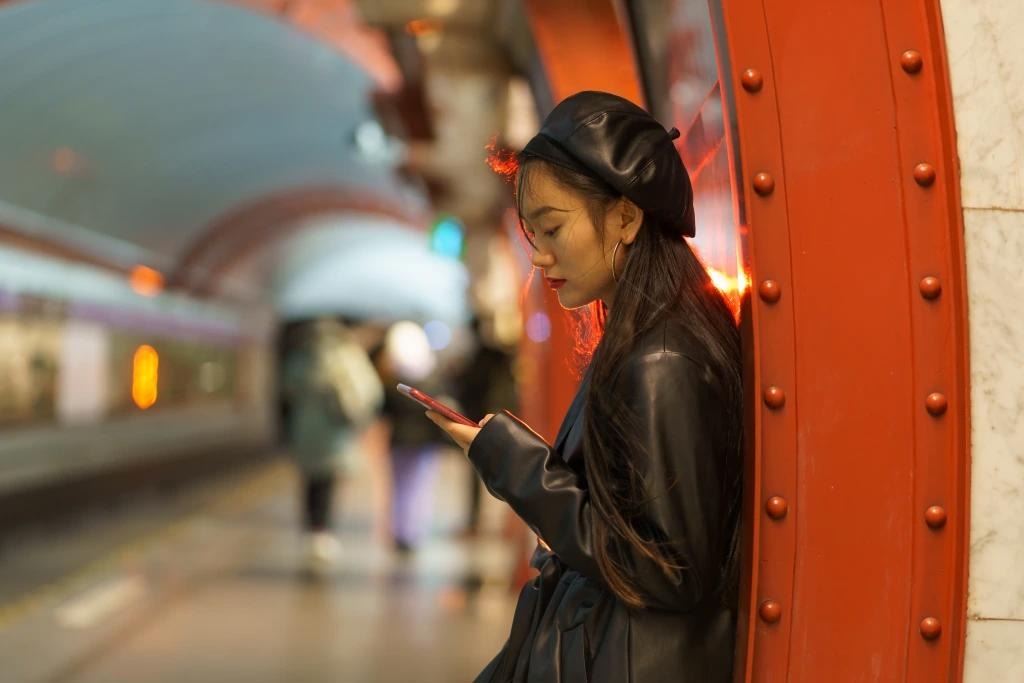Scientists asked 1,289 people who use emojis to respond to internet chat messages and report their feelings and emoji use. They found that more emojis were used between closer friends, that using positive emojis to express positive feelings correlated with personal wellbeing, and that positive emojis could be used to mask the expression of negative feelings.

Image Credit: Shutterstock.com
Have you ever received an unwanted gift and still said ‘thank you’? This choice to hide a negative emotion is a display rule — one of many which define socially appropriate responses to emotions. Although display rules can promote interpersonal harmony, they can also have negative consequences for the person choosing to change how they express emotions. As more social interaction goes online, scientists are investigating how emojis are used to reflect our emotions in different contexts. Are there display rules that apply to emojis, and how do those affect people’s wellbeing?
“As online socializing becomes more prevalent, people have become accustomed to embellishing their expressions and scrutinizing the appropriateness of their communication,” said Moyu Liu of the University of Tokyo, who investigated this question in a study published in Frontiers in Psychology. “However, I realized that this may lead us to lose touch with our authentic emotions.”
Emojis and emotions
Liu recruited 1,289 participants, all users of the most-downloaded emoji keyboard in Japan, Simeji, to investigate how emojis were used to express or mask emotions. Previous research had established that people use emojis as functional equivalents of facial expressions, but not the relationships between emotions expressed and experienced. This is when display rules can prove problematic: if the dissonance between the emotions that you experience and the emotions that you can express is too great, emotional exhaustion can develop, although members of different cultures experience this differently.
Display rules impact more on negative emotions, which it is usually considered less appropriate to express. It is also often more acceptable to express emotions to someone who is closer to you, and it can be more acceptable for a particular gender to express particular emotions. It can also be considered more acceptable to express negative emotions in more individualist societies.
Wearing your heart on your screen
The participants in Liu’s study provided demographic data, answered questions about their subjective wellbeing, and rated how often they use emojis. They were given messages with varying social contexts, responded to them as they would normally, and rated the intensity of the expression of their emotions.
Liu found that people chose to express more emotions with emojis in private contexts or with close friends. Respondents expressed least emotion towards higher-status individuals. Intense expressions of emotion came with matching emojis, unless people felt the need to mask their true emotions: for instance, using smiling emojis to mask negative emotions. Negative emojis were used only where negative feelings were very strongly felt. Expressing emotions with emojis was associated with higher subjective wellbeing compared to masking emotions.
With online socializing becoming ever more prevalent, it is important to consider whether it is causing us to become more detached from our true emotions. Do people require a ‘shelter’ to express their genuine emotions, and is it possible to break free from pretense and share our true selves in online settings?”
Moyu Liu, University of Tokyo
Liu emphasized that the study should be expanded in the future. The Simeji keyboard is extremely popular among young women, which skewed the sample towards women and generation Z. However, this also reflected the gender imbalance in use of emojis in general and the Simeji keyboard in particular. A broader pool of participants would provide a fuller picture of the display rules around emojis.
“First, the highly gender-imbalanced sample may have led to stronger results. Future research should explore potential gender differences in emoji display rules and examine the structural issues surrounding the formation of these emotion cultures,” cautioned Liu. “Second, Japanese culture's emphasis on interpersonal harmony and concealment of negative emotions may have influenced the results.”
“I would welcome the opportunity to expand this study and investigate the display rules for emojis across different genders and cultures,” added Liu. “Collaboration with scholars from diverse cultural backgrounds would be invaluable in this endeavor, and I am open to any contact.”
Source:
Journal reference:
Liu, M., (2023) Are you really smiling? Display rules for emojis and the relationship between emotion management and psychological well-being. Frontiers in Psychology. doi.org/10.3389/fpsyg.2023.1035742.